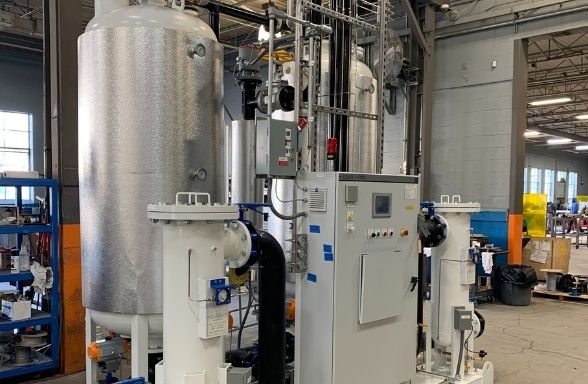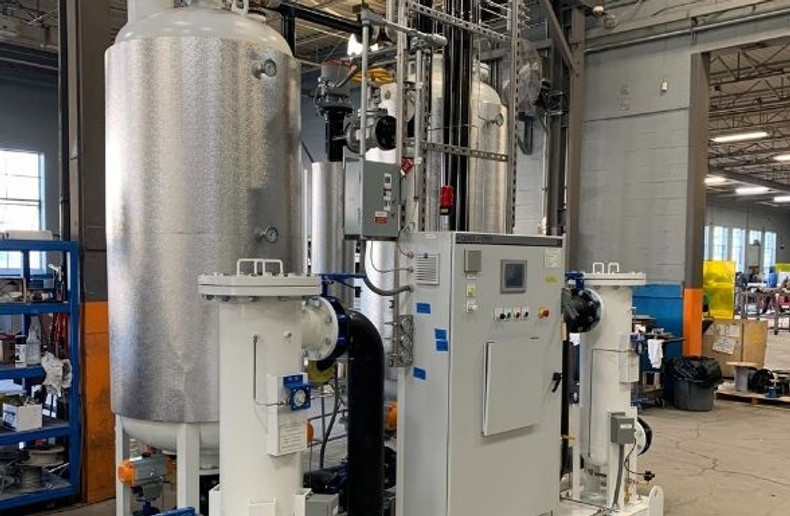
A piggable paint system is built with same-diamter pipes. A pig, or a pipeline cleaning device, which is slightly large in diameter than the pipe, is used to clean the piggable paint system pipes.
Piggable paint systems are getting popular. These paint systems are efficient, save time in switching paint and improves the color accuracy.
Traditionally, a paint system pipeline cleaning pig is a round, foam device that is pushed through the paint system with compressed air pressure. The pig then cleans the pipeline walls and removes any paint residue.
The piggable paint systems usually do manual pigging. The pig insertion, pushing and removal is manual and labor-intensive. However, the industry is changing fast in Europe and innovation is also getting adopted in North America.
In this article, we have discussed the top 3 advanced piggable technologies that can help you further improve the efficiency of your paint system. These are some of the ways the piggable paint systems are becoming automatic.
Paint Circulation Pigging System
Paint Circulation Pigging System does the pipeline pigging on automatic.
A permanent pig is made of a rubber-like material. It comes with a magnetic core. A permanent pig is in the shape of a cylindrical squeegee. It is solvent-resistant and does not react to the paint solvent. It has circular raised rings that make its cleaning process effective.
A permanent paint pipeline pig stays in the system. A permanent pig can be hundreds of times as it eliminates the need to insert and receive the pig. The elimination of manual work from the pipeline pigging and using the same pig again makes paint push out, pipeline cleaning, and next paint job preparation automatic. ‘
There are ports for launching and receiving the permanent pig. A pipeline cleaning pig stays out of the way of the paint.
A typical pigging cycle in a paint circulation pigging system with a permanent pig goes like this:
- The pig is launched and pushed into the pipelines by the force of compressed air, with or without solvent.
- The paint that the pig cleans is sent to the paint supply container.
- The pig receiving station, which is at the pump station, pushes the pig back to the pipelines for another round of cleaning.
- After 2,3 rounds of cleaning, most of the paint is cleaned from the pipes with compressed air and paint solvent.
- The paint system is ready to receive the next color.
A common practice in paint circulation systems is to divide the line into sections with valves for dumping and solvent. This way, the paint pipeline can be cleaned quickly.
Once cleaned, the paint pump and pipelines are filled automatically with the new paint color, thus saving time.
The automatic paint circulation pigging systems generally use piggable in-line color changer valves. A pig goes through these color-changer valves. This reduces the paint loss in the color-changing process. Combining all these factors, the only place where manual input is required is changing the paint container.
Advantages of Using Paint Circulation Piggable System
A paint circulation piggable system comes with many benefits and advantages. We have listed some of the advantages here.
- Reduces manual work in paint kitchen and time for color change process
- Close monitoring helps reduce paint losses and improves solvent use
- The possibility of human errors is reduces which further increases the system efficiency
- A magnet pig is trackable all the time giving the operator valuable information including the pig maintenance, paint viscosity, or any possible problems with paint both.
Using Pigs for the Delivery Of Limited Paint Volumes
Pigs are very effective in saving paint, time and operating cost of limited paint volumes. A typical beneficiary of pigs for limited paint volumes is speciality vehicle manufacturers.
Paint system users like over-the-road trucker manufacturers or the one we mentioned before, i.e., speciality vehicle suppliers often use many colors for the paint job. Some colors are used in small quantities on vehicles.
A typical paint line for vehicle painting is filled with 15-18 gallons of paint. Whereas, vehicle painting only takes 2-4 gallons of paint. The remaining paint is wasted.
When using pigs for delivering limited paint, the paint system is only filled with the amount of paint needed for the job. The pig pushes the paint down the end towards the paint application station with the help of compressed air. This way, the system will use only the amount of paint required without much waste.
The tracking paint system also helps save paint solvent and improves paint accuracy, reduces manual work, and minimizes the chances of human error. The upfront cost of installing a piggable paint circulation system is high, the investment pays for itself within six months in terms of saved paint and low operating costs.
Using Pigs to Recover Paint in the Application Lines
Pigs can help recover pain in the paint system application lines.
The automatic paint system run on robots uses paint lines on their arms. The paint pipeline length can be long in some forms of the paint robots like a robot on x-rails.
If we apply a pig in the paint system to push back the excessive paint to the pumping station, it will save the paint.
A pig will operate between the paint station and the color changer. The final effect on the system productivity and color accuracy are enormous.
Other Applications of Piggable Technologies
Here are some other applications of piggable technologies for the paint systems.
- The piggable paint technologies are used in the full range of paint applications including water-borne, solvent-borne, and plural-component paints.
- Automobile paint system increase efficiency and time with piggable paint technologies.
- Small-scale paint systems that handle varying paint jobs with many changes for every paint job benefit from piggable technologies.
Constant challenges are arising in improving the piggable technologies. With every new problem, there is a need for innovative engineering. The piggable technologies landscape is changing day by day and factories are using the paint pipeline pigs in an ever-effective way.

